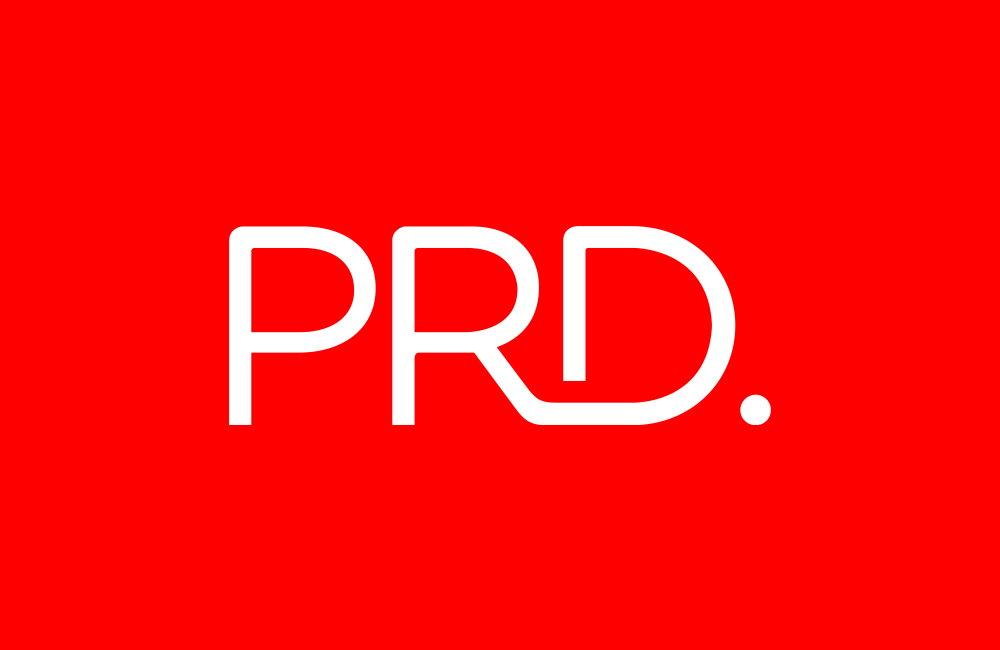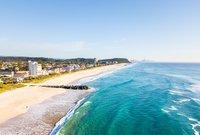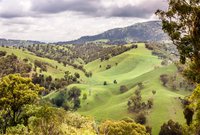Wagga Wagga Property Watch Q1 2012
Wagga Wagga City Council Market Overview Wagga Waggas location, on the main transport route between Sydney and Melbourne, and its function as administration centre for the wider Murrumbidgee region have helped it to become NSWs largest inland city, with a population of approximately 63,500 residents. The healthcare and social assistance, retail trade and accommodation, and food industries are the Citys largest employers, supported by strong financial and public administration sectors. The Wagga Wagga local government area (LGA) experienced a sharp drop in residential sales activity between the December 2007 and June 2008 half year period. This was followed by an ...
Wagga Wagga City Council Market Overview
Wagga Waggas location, on the main transport route between Sydney and Melbourne, and its function as administration centre for the wider Murrumbidgee region have helped it to become NSWs largest inland city, with a population of approximately 63,500 residents. The healthcare and social assistance, retail trade and accommodation, and food industries are the Citys largest employers, supported by strong financial and public administration sectors.
The Wagga Wagga local government area (LGA) experienced a sharp drop in residential sales activity between the December 2007 and June 2008 half year period. This was followed by an increasing number of sales in 2009 as the impact of government stimulus and low interest rates took effect. Activity softened in 2010 as buyers who purchased during the stimulus period were out of the market, with 2011 representing the lowest activity since 1998. More recently the City experienced the deluge of the Murrumbidgee River that led to at least 250 properties being flooded. The completion of highway upgrade projects had a flow-on effect on the residential property market, with the workers vacating their rental properties in Wagga Wagga. The Charles Sturt University expansion In North Wagga will be completed in 2013 and include at least 160 bedrooms, further adding to the supply of properties in the region.
The median rent price for a three bedroom house in the LGA closed the 2011 at $300 per week, while the rent for a two bedroom unit increased by 7.3% to $220 per week in the 12 months to December 2011. There are currently 230 houses and 100 units available for rent in the city. It is expected that some of the properties will be absorbed by residents whose houses have been flooded. In the longer term the supply of rental properties will remain at surplus, keeping growth in rent prices to a minimum.
House Market
A possible oversupply of the standard four bedroom house led to softer house conditions in 2011, which have also prevailed in the first quarter of 2012. With most vendors not under pressure to sell activity for detached houses remains subdued, as sellers wait for the market to improve. However, vendors who are willing to accept market prices are experiencing shorter selling periods than the average 140 days on the market. House activity softened by 10% from December 2010, with 463 transactions in the December 2011 six month period and remained 6.4% below the five year average. The median house price declined 3.4% in 2011, to a figure of $259,000 in December 2011. The average long term growth recorded over the past five years closed the December period at an average of 3.5% per annum. In contrast, vendors who exited the market during 2011 experienced an average capital increase of 5.9% per annum. This figure is based on a resale analysis conducted by PRD Research for all detached houses that sold in the 2011 calendar year. The analysis further found an average holding period between resales of nine years and four months. The price point chart reveals that the majority of houses transacted in the $250,000 to $299,999 range, accounting for 24% of the market. Homes selling for less than $150,000 are still available in Tolland and Ashmont, while more expensive dwellings are mostly concentrated around central Wagga Wagga, Lake Albert and Springvale.
The graph in the report depicts the number of sales by land size for each suburb in the Wagga Wagga LGA. The graph indicates that most houses transacted in established suburbs within close proximity to the Wagga Wagga town centre, with a smaller number of sales was recorded in newer suburbs like Springvale and Tatton. A limited number of lifestyle properties with land size of one hectare or more transacted in 2011, with Lake Albert, Springvale and San Isidore capturing the majority of sales.
Unit Market
Private sector unit developments are often limited to small scale villa and townhouse projects, which tend to suffer from restrictive lending requirements by the banks and local buyers preference for detached houses. The Grange Lifestyle Village is currently the largest medium density development in the region, with a buyer base of people over 55 years of age. The 218 unit project is due for completion in early to mid-2012 and is set to increase the overall supply of houses on the market as residents downsize and move into the Village.
The median unit price declined by 0.9% to $217,000 in the 12 months to December 2011. Activity declined by 16%, with 58 unit transactions in the second half of 2011, compared to 69 sales for the same period in 2010, and remained 6.2% below the five year average. The price point chart identified that almost one third (32%) of units transacted in the $200,000 to $249,999 price bracket. Toward the bottom end of the market, 18 units sold between $100,000 and $149,000 compared to 23 in 2010.
Vacant Land Market
The median land value edged higher in 2011 despite a drop in activity. The second half of 2011 recorded a median land price of $127,000 for a 633 square metre (sq m) lot, representing a 12 month growth of 1.6%. Sales in new estates in Bourklands, Tatton and Estella accounted for 43% of the activity, with Boorooma and Lake Albert recording 10 and 12 transactions respectively. A land size analysis revealed that lots with an area of 1,000 sq m or less accounted for 50% of transactions, compared to 57% in 2010. Larger lots ranging between 1,000 sq m and 1 acre declined from 28% in 2010 to 19% in 2011, while the share of larger lifestyle lots between 1 and 20 hectares increased to 17% in 2011.
Wagga Waggas location, on the main transport route between Sydney and Melbourne, and its function as administration centre for the wider Murrumbidgee region have helped it to become NSWs largest inland city, with a population of approximately 63,500 residents. The healthcare and social assistance, retail trade and accommodation, and food industries are the Citys largest employers, supported by strong financial and public administration sectors.
The Wagga Wagga local government area (LGA) experienced a sharp drop in residential sales activity between the December 2007 and June 2008 half year period. This was followed by an increasing number of sales in 2009 as the impact of government stimulus and low interest rates took effect. Activity softened in 2010 as buyers who purchased during the stimulus period were out of the market, with 2011 representing the lowest activity since 1998. More recently the City experienced the deluge of the Murrumbidgee River that led to at least 250 properties being flooded. The completion of highway upgrade projects had a flow-on effect on the residential property market, with the workers vacating their rental properties in Wagga Wagga. The Charles Sturt University expansion In North Wagga will be completed in 2013 and include at least 160 bedrooms, further adding to the supply of properties in the region.
The median rent price for a three bedroom house in the LGA closed the 2011 at $300 per week, while the rent for a two bedroom unit increased by 7.3% to $220 per week in the 12 months to December 2011. There are currently 230 houses and 100 units available for rent in the city. It is expected that some of the properties will be absorbed by residents whose houses have been flooded. In the longer term the supply of rental properties will remain at surplus, keeping growth in rent prices to a minimum.
House Market
A possible oversupply of the standard four bedroom house led to softer house conditions in 2011, which have also prevailed in the first quarter of 2012. With most vendors not under pressure to sell activity for detached houses remains subdued, as sellers wait for the market to improve. However, vendors who are willing to accept market prices are experiencing shorter selling periods than the average 140 days on the market. House activity softened by 10% from December 2010, with 463 transactions in the December 2011 six month period and remained 6.4% below the five year average. The median house price declined 3.4% in 2011, to a figure of $259,000 in December 2011. The average long term growth recorded over the past five years closed the December period at an average of 3.5% per annum. In contrast, vendors who exited the market during 2011 experienced an average capital increase of 5.9% per annum. This figure is based on a resale analysis conducted by PRD Research for all detached houses that sold in the 2011 calendar year. The analysis further found an average holding period between resales of nine years and four months. The price point chart reveals that the majority of houses transacted in the $250,000 to $299,999 range, accounting for 24% of the market. Homes selling for less than $150,000 are still available in Tolland and Ashmont, while more expensive dwellings are mostly concentrated around central Wagga Wagga, Lake Albert and Springvale.
The graph in the report depicts the number of sales by land size for each suburb in the Wagga Wagga LGA. The graph indicates that most houses transacted in established suburbs within close proximity to the Wagga Wagga town centre, with a smaller number of sales was recorded in newer suburbs like Springvale and Tatton. A limited number of lifestyle properties with land size of one hectare or more transacted in 2011, with Lake Albert, Springvale and San Isidore capturing the majority of sales.
Unit Market
Private sector unit developments are often limited to small scale villa and townhouse projects, which tend to suffer from restrictive lending requirements by the banks and local buyers preference for detached houses. The Grange Lifestyle Village is currently the largest medium density development in the region, with a buyer base of people over 55 years of age. The 218 unit project is due for completion in early to mid-2012 and is set to increase the overall supply of houses on the market as residents downsize and move into the Village.
The median unit price declined by 0.9% to $217,000 in the 12 months to December 2011. Activity declined by 16%, with 58 unit transactions in the second half of 2011, compared to 69 sales for the same period in 2010, and remained 6.2% below the five year average. The price point chart identified that almost one third (32%) of units transacted in the $200,000 to $249,999 price bracket. Toward the bottom end of the market, 18 units sold between $100,000 and $149,000 compared to 23 in 2010.
Vacant Land Market
The median land value edged higher in 2011 despite a drop in activity. The second half of 2011 recorded a median land price of $127,000 for a 633 square metre (sq m) lot, representing a 12 month growth of 1.6%. Sales in new estates in Bourklands, Tatton and Estella accounted for 43% of the activity, with Boorooma and Lake Albert recording 10 and 12 transactions respectively. A land size analysis revealed that lots with an area of 1,000 sq m or less accounted for 50% of transactions, compared to 57% in 2010. Larger lots ranging between 1,000 sq m and 1 acre declined from 28% in 2010 to 19% in 2011, while the share of larger lifestyle lots between 1 and 20 hectares increased to 17% in 2011.





